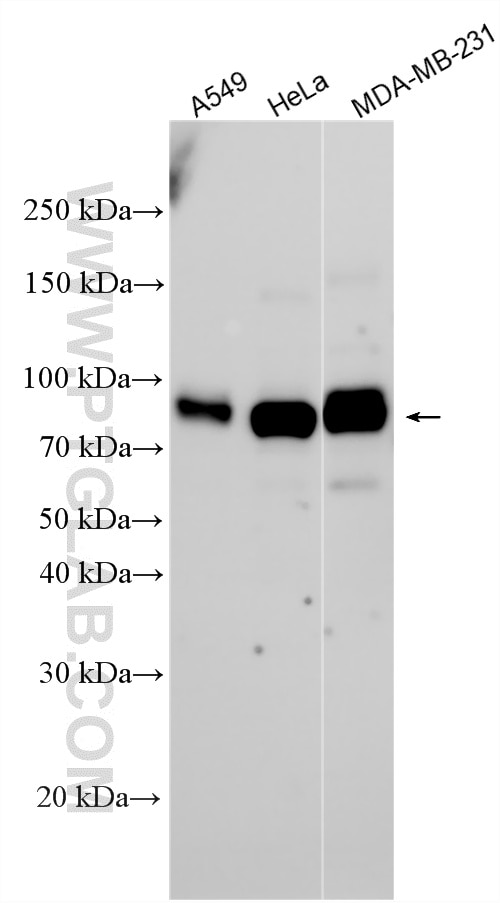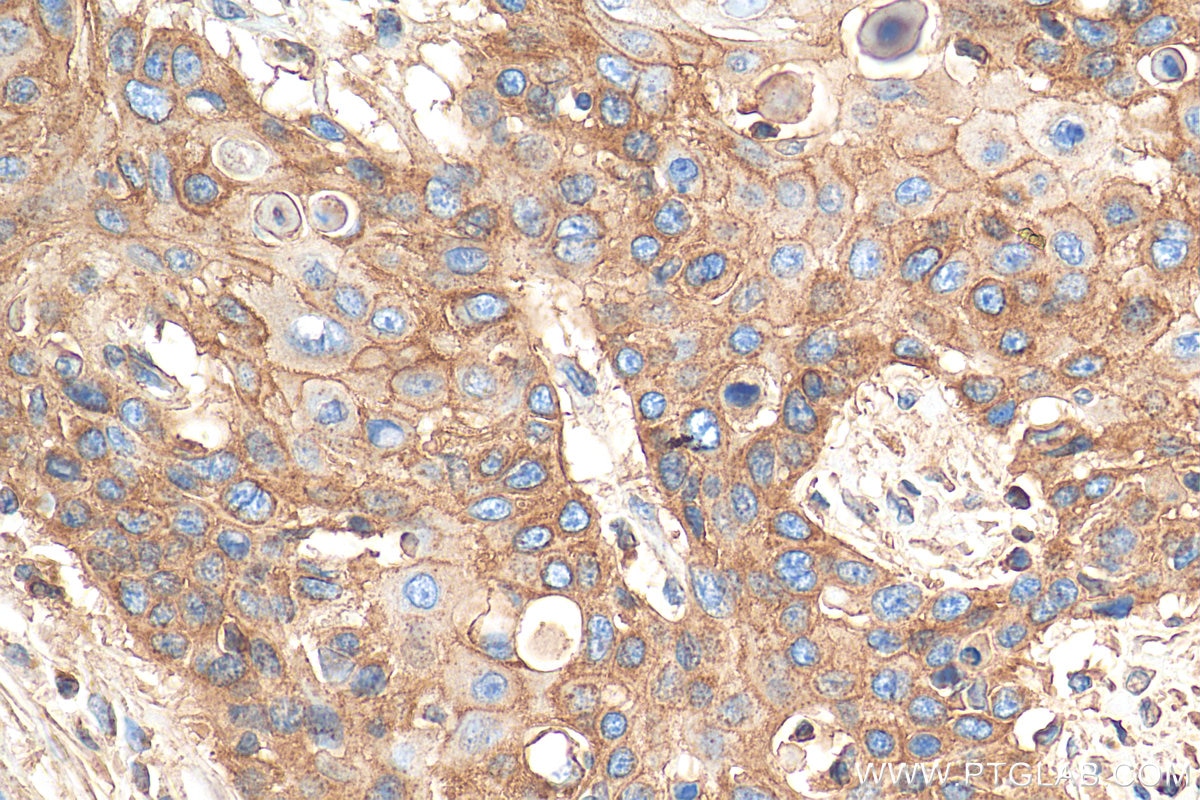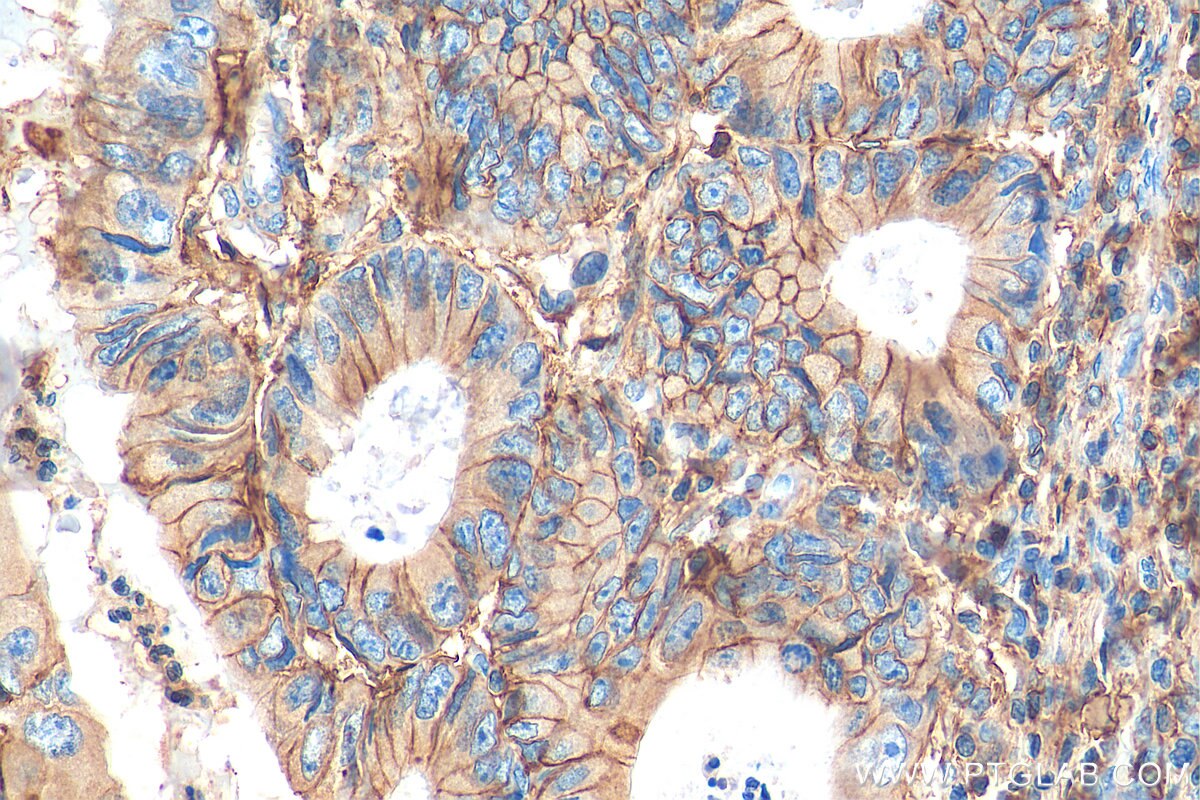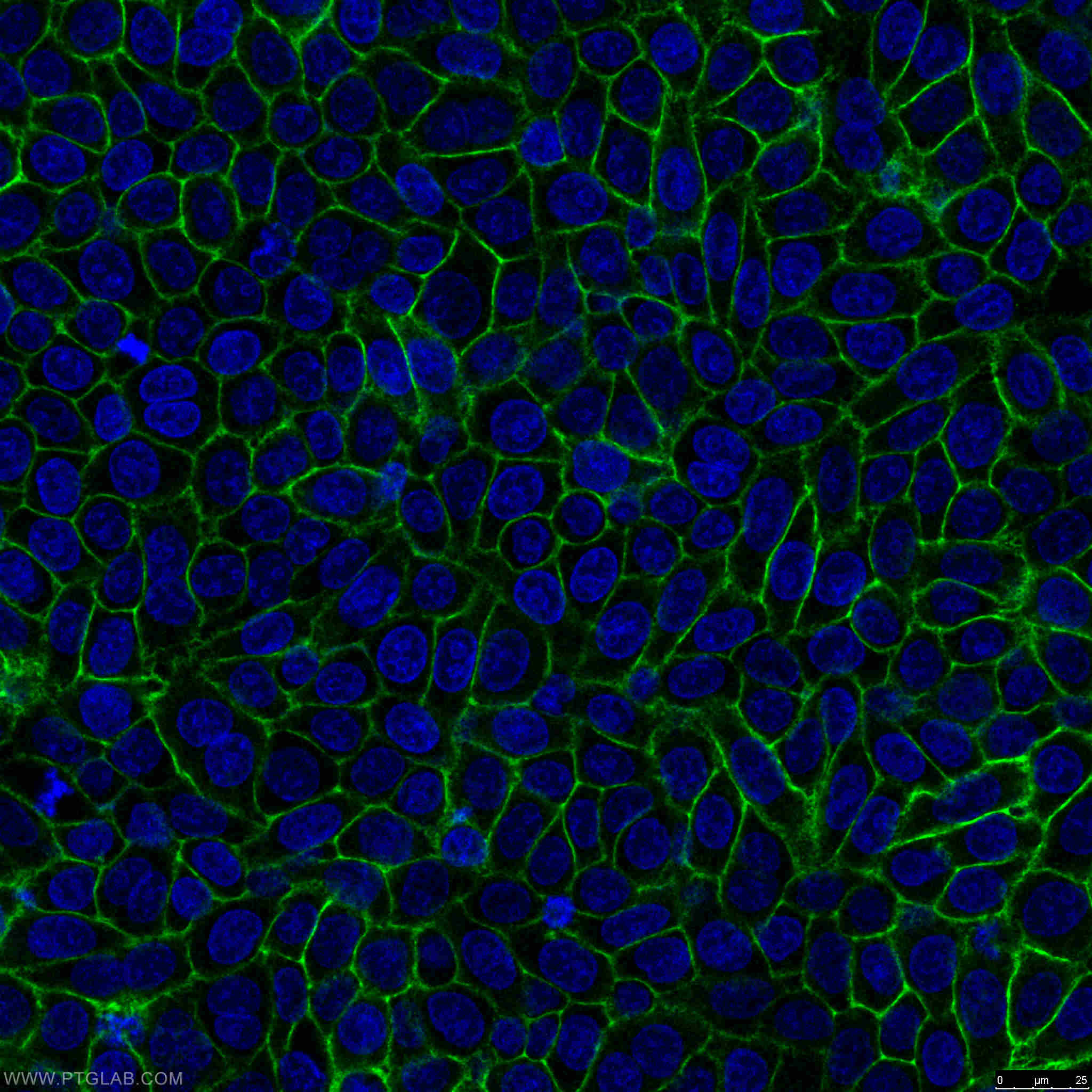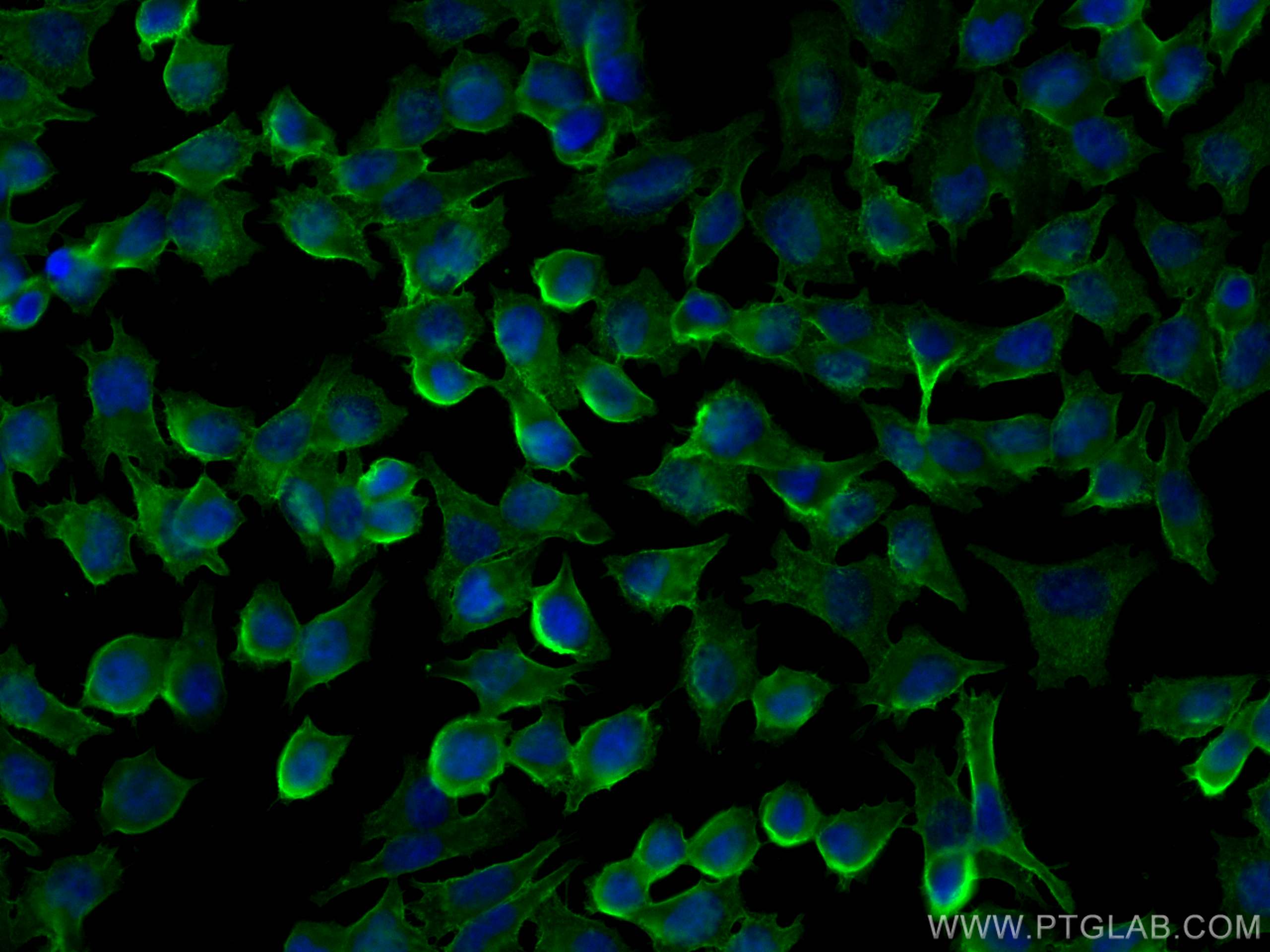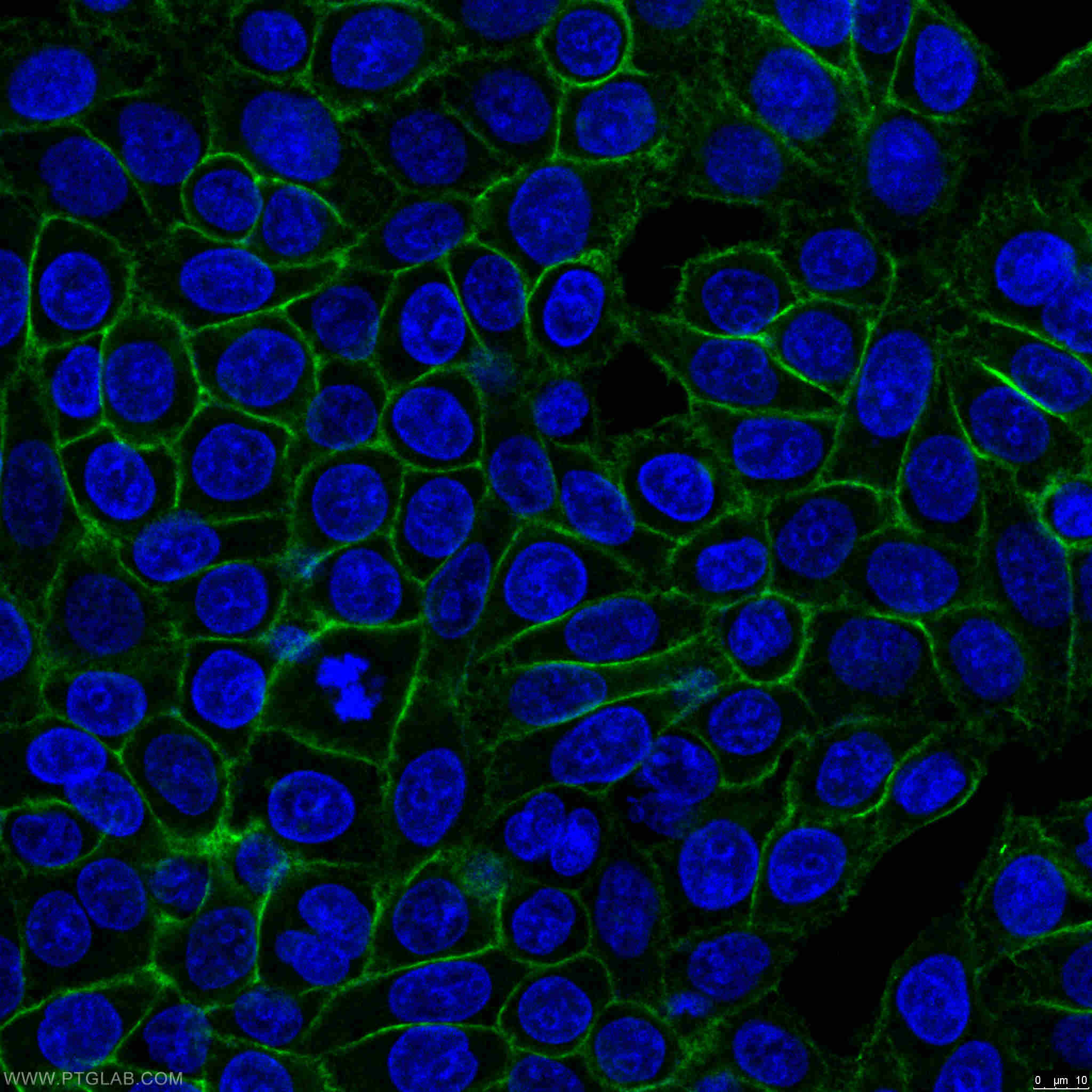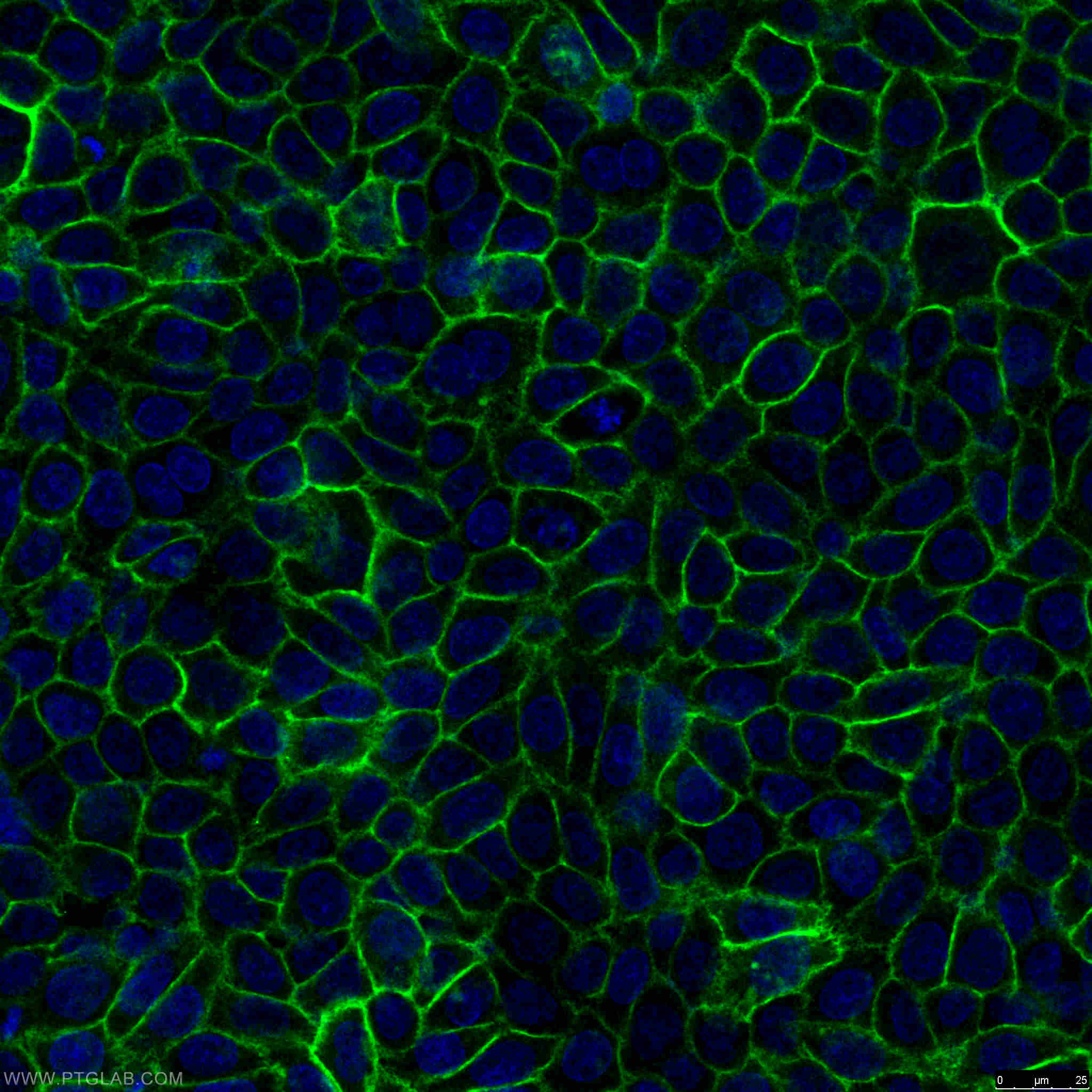Tested Applications
| Positive WB detected in | A549 cells, HeLa cells, HUVEC cells, MDA-MB-231 cells |
| Positive IP detected in | HeLa cells |
| Positive IHC detected in | human lung cancer tissue, human colon cancer tissue, human oesophagus cancer tissue Note: suggested antigen retrieval with TE buffer pH 9.0; (*) Alternatively, antigen retrieval may be performed with citrate buffer pH 6.0 |
| Positive IF-P detected in | human colon cancer tissue |
| Positive IF/ICC detected in | HeLa cells, human colon cancer tissue, A375 cells, HUVEC cells, UCMSCs cells |
Recommended dilution
| Application | Dilution |
|---|---|
| Western Blot (WB) | WB : 1:5000-1:50000 |
| Immunoprecipitation (IP) | IP : 0.5-4.0 ug for 1.0-3.0 mg of total protein lysate |
| Immunohistochemistry (IHC) | IHC : 1:500-1:2000 |
| Immunofluorescence (IF)-P | IF-P : 1:50-1:500 |
| Immunofluorescence (IF)/ICC | IF/ICC : 1:50-1:500 |
| It is recommended that this reagent should be titrated in each testing system to obtain optimal results. | |
| Sample-dependent, Check data in validation data gallery. | |
Published Applications
| KD/KO | See 16 publications below |
| WB | See 259 publications below |
| IHC | See 95 publications below |
| IF | See 103 publications below |
| IP | See 2 publications below |
| CoIP | See 4 publications below |
Product Information
15675-1-AP targets CD44 in WB, IHC, IF/ICC, IF-P, IP, CoIP, Neutralization, ELISA applications and shows reactivity with human samples.
| Tested Reactivity | human |
| Cited Reactivity | human, bovine, sika deer |
| Host / Isotype | Rabbit / IgG |
| Class | Polyclonal |
| Type | Antibody |
| Immunogen |
CatNo: Ag8143 Product name: Recombinant human CD44 protein Source: e coli.-derived, PGEX-4T Tag: GST Domain: 28-380 aa of BC004372 Sequence: CRFAGVFHVEKNGRYSISRTEAADLCKAFNSTLPTMAQMEKALSIGFETCRYGFIEGHVVIPRIHPNSICAANNTGVYILTSNTSQYDTYCFNASAPPEEDCTSVTDLPNAFDGPITITIVNRDGTRYVQKGEYRTNPEDIYPSNPTDDDVSSGSSSERSSTSGGYIFYTFSTVHPIPDEDSPWITDSTDRIPATSTSSNTISAGWEPNEENEDERDRHLSFSGSGIDDDEDFISSTISTTPRAFDHTKQNQDWTQWNPSHSNPEVLLQTTTRMTDVDRNGTTAYEGNWNPEAHPPLIHHEHHEEEETPHSTSTIQATPSSTTEETATQKEQWFGNRWHEGYRQTPREDSHST Predict reactive species |
| Full Name | CD44 molecule (Indian blood group) |
| Calculated Molecular Weight | 742 aa, 82 kDa |
| Observed Molecular Weight | 80-95 kDa |
| GenBank Accession Number | BC004372 |
| Gene Symbol | CD44 |
| Gene ID (NCBI) | 960 |
| ENSEMBL Gene ID | ENSG00000026508 |
| RRID | AB_2076198 |
| Conjugate | Unconjugated |
| Form | Liquid |
| Purification Method | Antigen affinity purification |
| UNIPROT ID | P16070 |
| Storage Buffer | PBS with 0.02% sodium azide and 50% glycerol, pH 7.3. |
| Storage Conditions | Store at -20°C. Stable for one year after shipment. Aliquoting is unnecessary for -20oC storage. 20ul sizes contain 0.1% BSA. |
Background Information
CD44 is a type I transmembrane glycoprotein that mediates cell-cell and cell-matrix interactions through its affinity for hyaluronic acid (HA) and possibly also through its affinity for other ligands. Adhesion with HA plays an important role in cell migration, tumor growth and progression. CD44 is also involved in lymphocyte activation, recirculation and homing, and in hematopoiesis. This protein exists in multiple forms (with molecular weight ranging from 16 kDa to over 200 kDa) generated by alternative RNA splicing and extensive post-translational modifications.
Protocols
| Product Specific Protocols | |
|---|---|
| IF protocol for CD44 antibody 15675-1-AP | Download protocol |
| IHC protocol for CD44 antibody 15675-1-AP | Download protocol |
| IP protocol for CD44 antibody 15675-1-AP | Download protocol |
| WB protocol for CD44 antibody 15675-1-AP | Download protocol |
| Standard Protocols | |
|---|---|
| Click here to view our Standard Protocols |
Publications
| Species | Application | Title |
|---|---|---|
Nanomicro Lett Molecular Mechanisms of Intracellular Delivery of Nanoparticles Monitored by an Enzyme-Induced Proximity Labeling | ||
Nat Commun Injectable ECM-mimetic dynamic hydrogels abolish ferroptosis-induced post-discectomy herniation through delivering nucleus pulposus progenitor cell-derived exosomes | ||
J Clin Invest LOXL2-induced PEAR1 Ser891 phosphorylation suppresses CD44 degradation and promotes triple-negative breast cancer metastasis | ||
Adv Sci (Weinh) The Critical Role of The Piezo1/β-catenin/ATF4 Axis on The Stemness of Gli1+ BMSCs During Simulated Microgravity-Induced Bone Loss |
Reviews
The reviews below have been submitted by verified Proteintech customers who received an incentive for providing their feedback.
FH Kishor (Verified Customer) (06-23-2019) | This antibody works very good at 1:1000 in WB over night at 4o C and 1:200 for IF in cultured cells.
|


